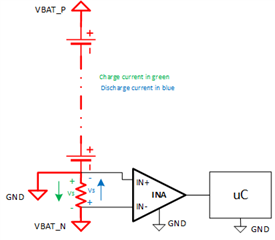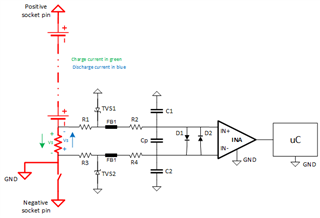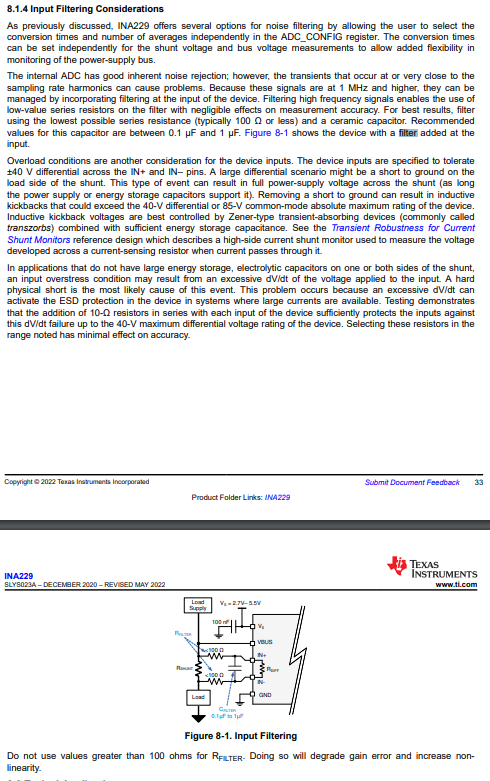Other Parts Discussed in Thread: TIDA-00302
Hi all,
I'm going to use the INA229 as lithium battery power monitor in low-side style but I'm worried about the low common mode input range of the pin IN+ and IN-.

In a situation like this I have two cases:
- Charge (green): the IN- pin of the INA could reach a negative voltage of -163.84 mV (max ). The Vin(CommonMode)=(-163.84+0)/2=-81.92 mV
- Discharge (blue): the IN- pin of the INA could reach a positive voltage of +163.84 mV (max ). The Vin(CommonMode)=(163.84-0)/2=81.92 mV
I'm worried due to the negative voltage of the IN- pin. The common mode input voltage is still in the ABS ratings but is very close to -0.3V.
Is this the correct way to use the INA229 ?
Thanks




